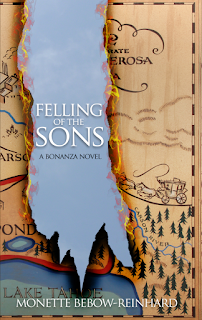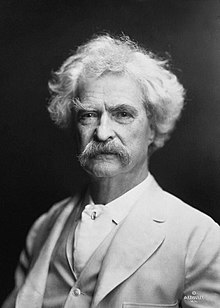“Back when the west was very young, there lived a man named Masterson. He wore a cane and derby hat. They called him Bat... Bat Masterson.”
Though it may vex some as to how one ‘wears a cane’, the title song of TV’s Bat Masterson stressed the significance of the title hero’s signature prop which would serve as an all-purpose tool, character trademark and narrative gimmick.
Of course, that was merely the popular television version of Masterson as played by Gene Barry. The actual one was born Bartholomew Masterson on November 27, 1853 in Henryville, Quebec.
After growing up on various family farms in the states, he worked for the army as a scout and hunted buffalo in Kansas. During a hunting trip with his brother Ed, he acquired the nickname “Bat” from a local legend, Baptiste Brown, a skilled trapper and hunter.
After traveling with a buffalo hunting party from Dodge City to Texas, Bat took part in the ‘Second Battle of Adobe Walls.’ Attacks on the hunters’ camp from 700 Cheyenne, Comanche, Kiowa and Arapaho lasted four bloody days and ceased only when reinforcements arrived to fend off the remaining Indian warriors. Following this skirmish, the Army moved in on Indians in the Texas Panhandle and Bat joined them as a scout under Captain Nelson Miles during what was termed the Red River War. The unit was successful in rescuing four sisters from a band of Cheyenne who had previously slaughtered their family.
Bat then began dealing faro at a local saloon. In 1876, during a game of cards with Sergeant Melvin King, an argument between them led to a gunfight in which Bat killed King. Peculiarly, a saloon girl named Mollie Brennan was involved in the quarrel and died after King’s bullet, which hit Bat’s pelvis, passed first through her. The wound left Bat with a permanent limp.
The Wild West seemed to specialize in odd and unlikely twists of fate, and Bat Masterson’s life was no exception. He soon found himself in Dodge City again, this time working as a lawman. The days of the cattle drives had arrived with their restless cow punchers descending on the untamed town. Marshal Wyatt Earp had his work cut out for him and soon enlisted Bat’s help.
In 1877 Bat ran for sheriff of Ford County and won narrowly. With a posse and his deputized brother Ed, he captured four would-be train robbers in Kinsley, Kansas in 1878. But later that year, Ed Masterson, then the City Marshal, was killed after taking a gun from a drunk who then shot him with a second concealed firearm.
Appointed as a deputy U.S. Marshal in 1879, Bat became involved with the Atchison, Topeka and Santa Fe Railroad in the defense of the company from rival railroad outfits. To help maintain the peace in this “war”, Bat enlisted the famed gunman and gambler (and yes, dentist) “Doc” Holliday.
After losing re-election, Bat ventured to Colorado and tried his hand at gold prospecting before heading to Tombstone, Arizona where his friend Wyatt Earp worked in the Oriental Saloon.
However, it would be a saloon in Dodge— the Lady Gay, that brought Bat back to Kansas where he received word that his brother James was injured in a fight with the saloon’s owner. Bat arrived to face off with James against the Lady Gay’s owner and its barkeep, who they wounded in the gunfight. The town mayor himself eventually disarmed Bat and arrested both Masterson brothers.
Bat returned to Colorado, living off gambling and periodically working as a city marshal. The association with gambling and dealing, in addition to his role in helping Earp save Doc Holliday from extradition to Arizona contributed to his loss in a re-election bid in 1883.
Later that year, Bat assisted Earp in defending their friend, gunfighter Luke Short, from Dodge’s mayor in the ‘Dodge City War.” By 1888, Bat had purchased a theatre and allegedly married an actress named Emma Moulton three years later.
After trying his hand at promoting boxing and writing a sports column, Bat headed east to New York to serve as a bodyguard. Soon he was appointed as deputy U.S. marshal of New York by his friend, President Theodore Roosevelt, and began writing sports columns there as well. It was there, in 1921, that Bat Masterson died from a heart attack at his newspaper desk, aged 67.
By then, the dawn of cinema had properly arrived and famed western figures like Bat had blossomed into that of legend. Cowboy actor William S. Hart had even posed for photos with the former lawman at his office only weeks before his death. Bat would later be portrayed notably on film by Randolph Scott, George Montgomery and Joel McRae. Most, however, will probably recall the eponymous TV series which ran from 1958-1961.
Bat Masterson aired on NBC during an incredible period when, at one point, 26 of the shows in prime time were westerns. “One name stands out all o’er the rest”, of course.
Gene Barry as a middle-aged Bat drifted through weekly adventures and romances, often crossing paths with other luminaries, outlaws and notorious names of the Old West.
So what in tarnation, then, is all that business with the hat and cane? Well, it would seem that the ‘dapper dude’ image was created to help Barry’s character stand out— and it worked. Historians and writers have remarked on Bat Masterson’s inclination to eschew violent situations, particularly following the Lady Gay Dance Hall gunfight. This resulted in a literary embellishment of the ‘gentleman’ persona.
So one might say it’s a classic case of a myth from another time, becoming one more legend for the “man who became a legend in his own time.”
“Bat Masterson” lyrics by Bart Corwin
Bat Masterson is available on DVD and can be seen currently on FETV... same Bat-time, same Bat-channel!
>> You're invited to watch Masterson in action
About the Author
Christopher Robinson is a writer, filmmaker and musician in New Jersey who has contributed to several magazines and websites.
Robinson also worked as a cameraman, videographer, cable access TV host, teacher and producer. He scripted and produced commercial videos as well as cable television programs for local consumption.

Be sure to visit
THE TV WESTERN AND MOVIE FAN PAGE
on Facebook!






















